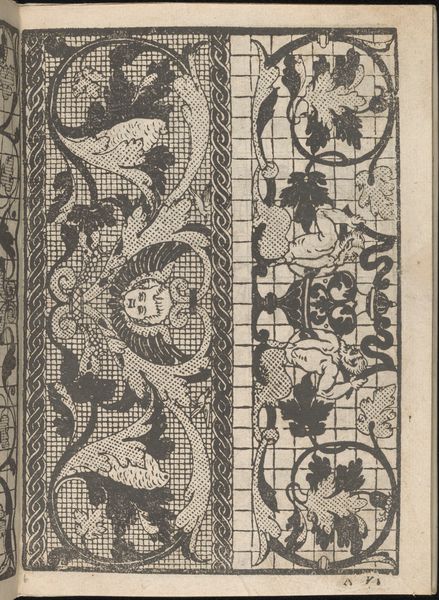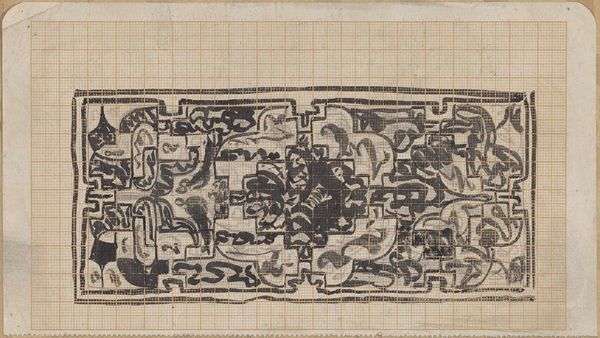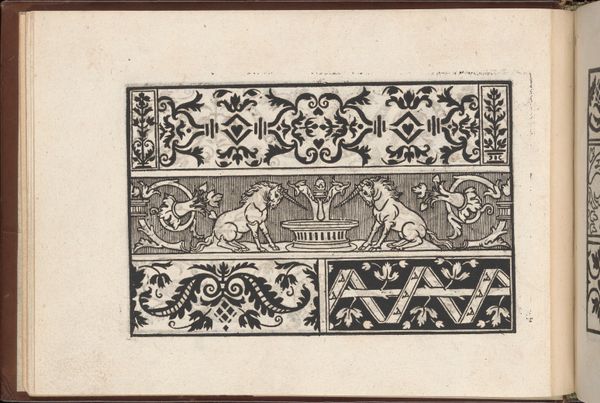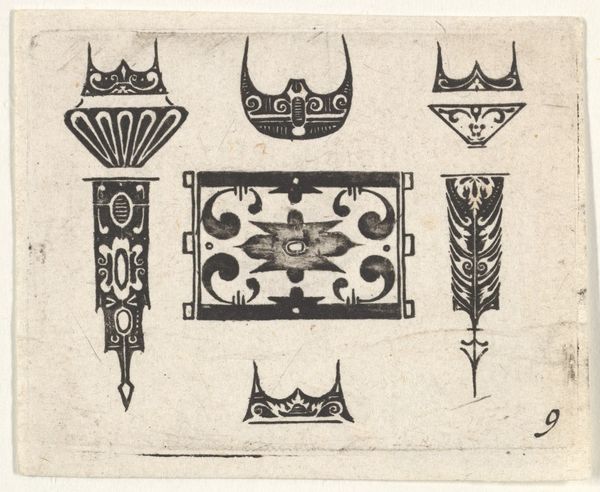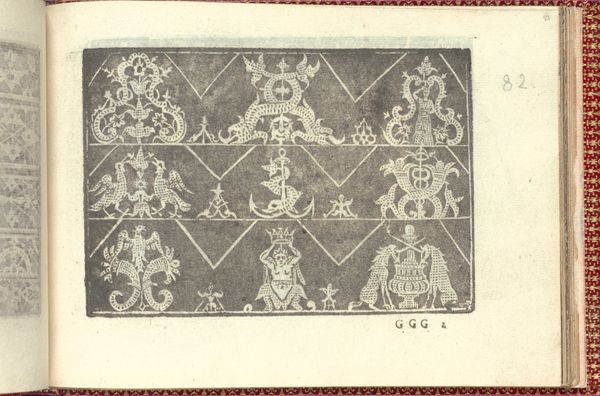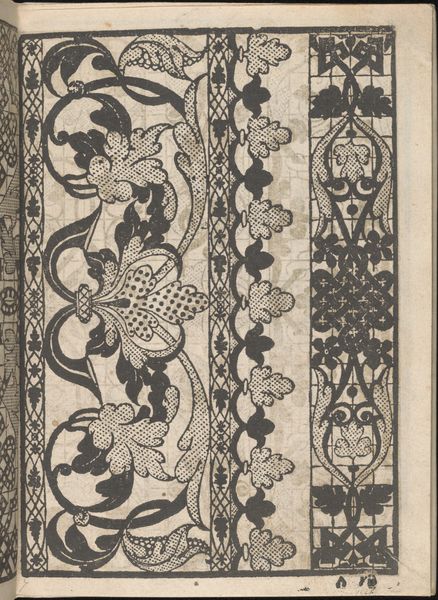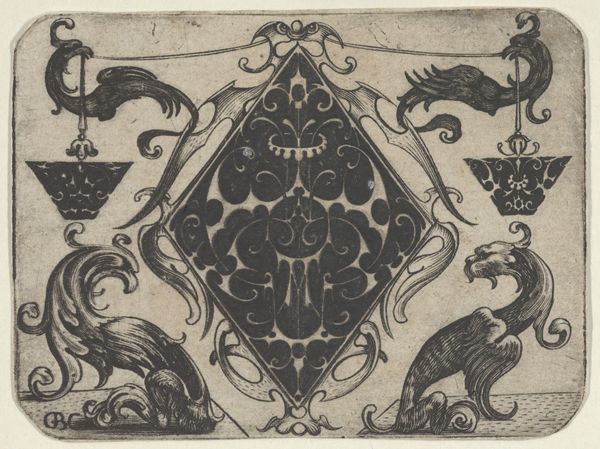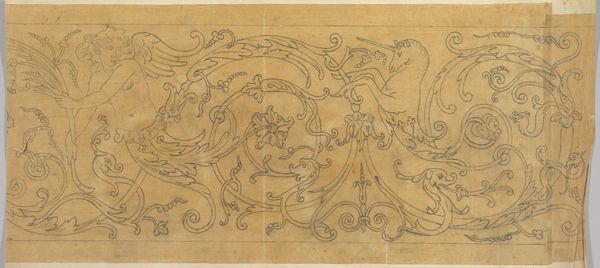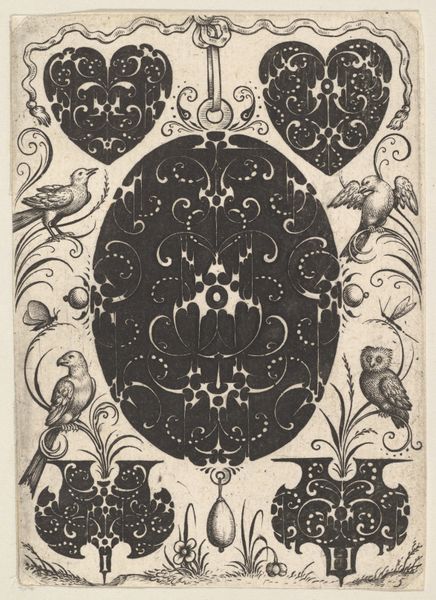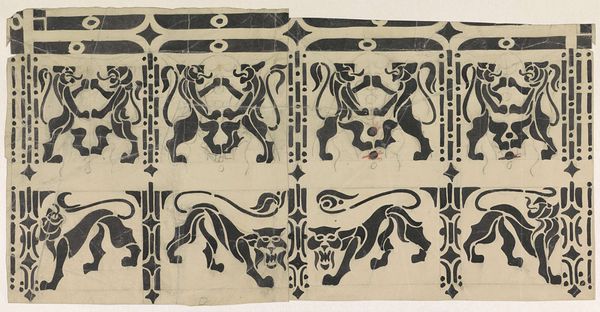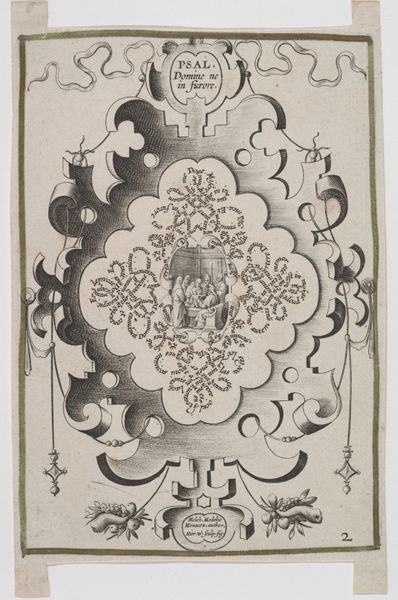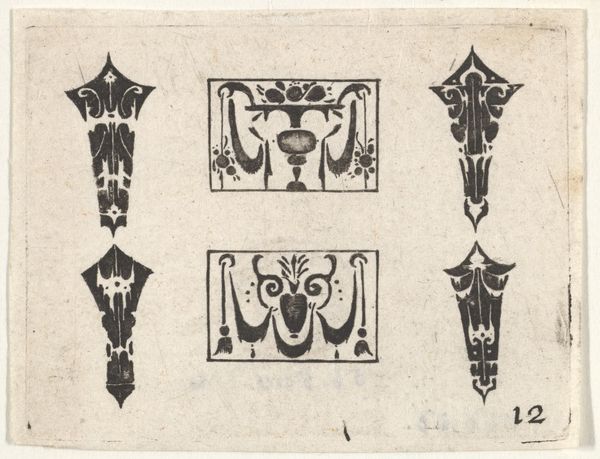
Blackwork Print with an All-Over Schweifwerk Pattern 1600 - 1620
0:00
0:00
drawing, print, etching
#
drawing
#
pen drawing
# print
#
etching
#
11_renaissance
#
geometric
Dimensions: Plate: 1 5/8 x 2 3/16 in. (4.2 x 5.5 cm) [partly cropped]
Copyright: Public Domain
Editor: This is "Blackwork Print with an All-Over Schweifwerk Pattern" made by Claes Jansz. Visscher around 1600 to 1620. It's an etching, a style I wouldn't normally expect to see outside a book. The repeating design is fascinating; almost like architectural ornamentation scaled down. What’s your take? Curator: I'm struck by its materiality, not just its appearance. This print served a function, probably in workshops. It’s an etching, so consider the copperplate itself: its cost, the engraver's labor, and how many impressions could be pulled before it wore down. This wasn't about individual artistic expression; it was a reproductive technology serving a broader market for decorative patterns. Where do you think such a pattern might have been applied? Editor: Maybe embroidery patterns, furniture inlays, or even wallpaper? The precision suggests a highly skilled artisan. How much would a print like this have cost someone back then? Curator: Exactly! Its value would depend on several factors: the quality of the paper, the reputation of the printmaker, and demand for the specific pattern. However, we need to look beyond monetary value. Consider its circulation—did it democratize access to fashionable design or reinforce existing social hierarchies through consumption? Editor: So, you are more interested in who produced and consumed this work rather than the style itself? Curator: Precisely. The style exists, obviously, but the economic and social systems that enabled the printmaking process is equally important. This print invites us to investigate the Renaissance decorative arts industry as a whole, how goods were manufactured, traded, and used. Editor: I see, it opens up a wider view of Renaissance life beyond paintings and sculptures. I had focused just on its decorative appeal initially. Curator: Indeed, focusing on the labor, materiality, and distribution allows us to understand how art was consumed back then. It changes how we look at everything, really.
Comments
No comments
Be the first to comment and join the conversation on the ultimate creative platform.
